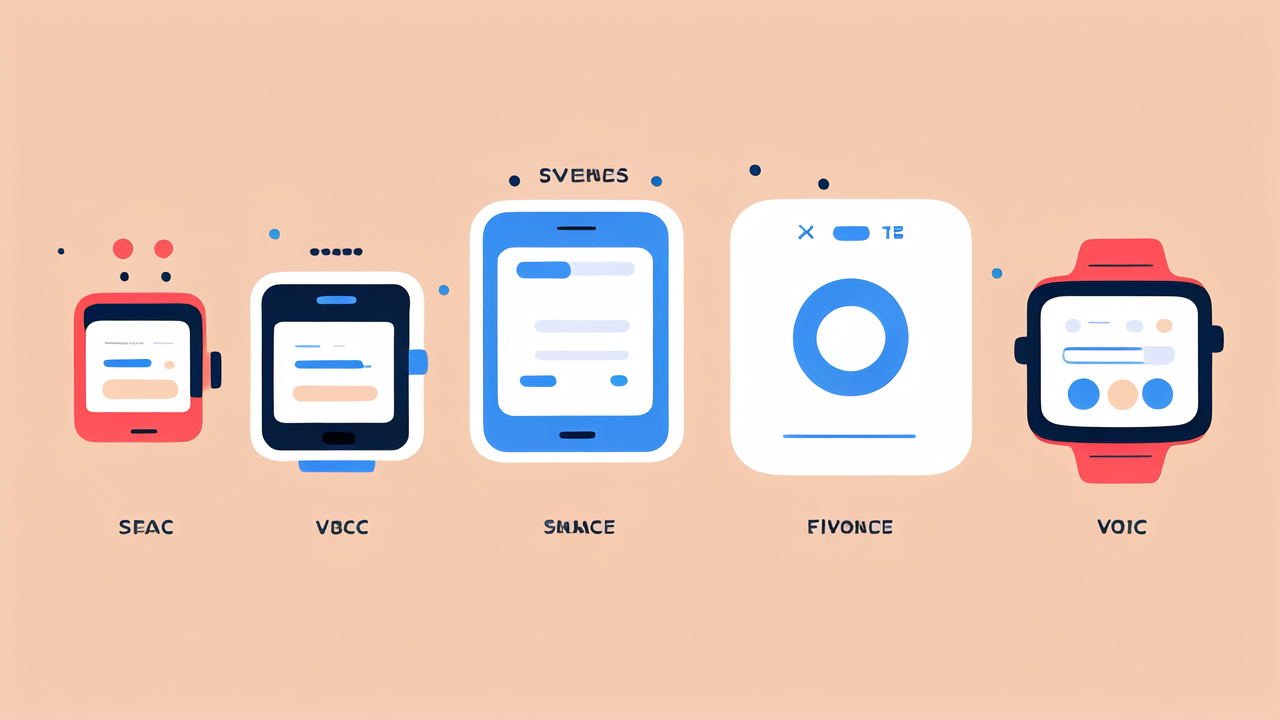The Rise of Wearable Fitness Technology in the United States
An Overview of the Smart Watch Market Growth
Smart watches have become a ubiquitous part of our daily lives. The market has grown rapidly in recent years. In 2015, global shipments were around 19 million units. By 2020, this number had risen to over 100 million.

Several factors have driven this growth. Improved technology has made smart watches more useful. Better battery life and more features have attracted consumers. The focus on health and fitness tracking has also been a key driver.
Major tech companies have entered the market. Apple, Samsung, and Fitbit are now key players. This has increased competition and innovation. It has also raised awareness among consumers.
The COVID-19 pandemic has further boosted demand. People have become more health-conscious. They want to monitor their fitness and wellness more closely. Smart watches offer an easy way to do this.
The Role of Smart Watches in Health and Wellness
Smart watches have become essential tools for health and wellness. They offer a range of features that help users monitor their health. These include heart rate tracking, sleep monitoring, and step counting.
Many smart watches now include more advanced health features. Some can measure blood oxygen levels. Others can detect irregular heart rhythms. These features can help users spot potential health issues early.
Smart watches also motivate users to be more active. They set daily activity goals and send reminders to move. This can help combat sedentary lifestyles and improve overall health.
Some smart watches integrate with health apps and services. This allows users to share data with healthcare providers. It can lead to more personalized healthcare and better outcomes.
The Impact of Regulatory Standards on Wearable Devices
As smart watches become more advanced, they face increased regulatory scrutiny. The FDA has started to classify some smart watches as medical devices. This is due to their ability to detect certain health conditions.
Regulatory standards ensure that these devices are safe and effective. They also protect user privacy and data security. Companies must prove that their devices meet these standards.
The FDA has created a Digital Health Innovation Action Plan. This aims to streamline the approval process for digital health products. It could lead to faster innovation in the smart watch market.
However, regulation also poses challenges for companies. They must invest more in testing and compliance. This could slow down the release of new features and devices.
Innovations in Smart Watch Health Tracking
Advanced Metrics for Measuring Health and Fitness
Smart watches now offer a wide range of advanced health metrics. These go beyond basic step counting and heart rate monitoring. Many devices can now track sleep patterns in detail. They measure sleep stages and provide insights for better rest.

Some smart watches can measure blood oxygen levels. This is useful for detecting sleep apnea and other conditions. Others can record ECG readings to detect irregular heart rhythms.
Stress monitoring is another emerging feature. Devices use heart rate variability to estimate stress levels. They then offer breathing exercises or meditation guidance to help users relax.
Newer models are exploring even more advanced metrics. Some can measure skin temperature or estimate blood glucose levels. These features could help detect illnesses or manage chronic conditions.
Integrating AI and Machine Learning for Personalized Health Monitoring
AI and machine learning are transforming smart watch health tracking. These technologies analyze vast amounts of data to provide personalized insights. They can detect patterns and anomalies that humans might miss.
AI algorithms can predict health events before they occur. For example, they might detect signs of an impending heart attack. This could allow for early intervention and better outcomes.
Machine learning models can provide personalized fitness recommendations. They analyze a user's activity patterns and goals to create tailored workout plans. This makes smart watches more effective as personal trainers.
AI can also help improve the accuracy of health measurements. It can filter out noise and artifacts in sensor data. This leads to more reliable readings and fewer false alarms.
The Future of Digital Health and Smart Watch Integration
The future of smart watches in digital health looks promising. We can expect even closer integration with healthcare systems. Smart watches may become key tools for remote patient monitoring.
Continuous health monitoring could revolutionize preventive care. It could help detect health issues before they become serious. This could lead to better outcomes and lower healthcare costs.
Smart watches may play a role in clinical trials. They can collect real-world data from participants. This could speed up drug development and improve treatment efficacy.
We may see smart watches that can measure blood pressure or blood glucose without needles. This would be a game-changer for people with hypertension or diabetes.
Privacy and data security will remain important concerns. As smart watches collect more sensitive health data, protecting this information will be crucial.
Best Practices in Smart Watch Health Tracking for Consumers
Understanding the Importance of Accuracy and Data Integrity
Accuracy is crucial when using smart watches for health tracking. Users should be aware that these devices are not medical-grade equipment. They can provide useful insights, but should not replace professional medical advice.

To ensure accuracy, users should wear their smart watch correctly. The device should fit snugly on the wrist. It should be clean and free from obstructions like dirt or sweat.
Regular calibration can help maintain accuracy. Some devices allow users to input their actual weight or heart rate. This helps the device provide more accurate estimates.
Users should also be aware of factors that can affect readings. Exercise, stress, and even caffeine can impact heart rate measurements. Understanding these factors can help interpret the data correctly.
How to Select a Smart Watch for Health Monitoring
When choosing a smart watch for health monitoring, consider your specific needs. If you have a particular health concern, look for a device that specializes in that area.
Battery life is an important factor. Continuous health monitoring can drain batteries quickly. Look for devices with long battery life or fast charging capabilities.
Consider the compatibility with your smartphone and other devices. Some smart watches work better with certain phone brands. Check if the watch can sync with your favorite fitness apps.
Look for devices with a good track record for accuracy. Read reviews and compare features. Some devices have been validated in clinical studies. This can provide extra assurance of their reliability.
Consider the user interface and ease of use. A complicated device may discourage regular use. Look for watches with clear displays and intuitive controls.
Ensuring Compliance with Health and Wellness Standards
To get the most benefit from your smart watch, use it consistently. Wear it regularly and sync it with your phone or computer. This ensures you have a complete picture of your health over time.
Set realistic goals based on your current fitness level. Gradually increase your targets as you improve. This approach is more sustainable and less likely to lead to burnout.
Use the data from your smart watch to inform discussions with your healthcare provider. Share trends or concerns you've noticed. This can lead to more productive health conversations.
Be mindful of privacy settings. Understand what data your device collects and where it's stored. Use strong passwords and two-factor authentication to protect your health information.
Remember that smart watches are tools, not magic solutions. They work best when combined with a healthy lifestyle. Use the insights from your device to make positive changes in your daily habits.




Leave a comment
This site is protected by hCaptcha and the hCaptcha Privacy Policy and Terms of Service apply.